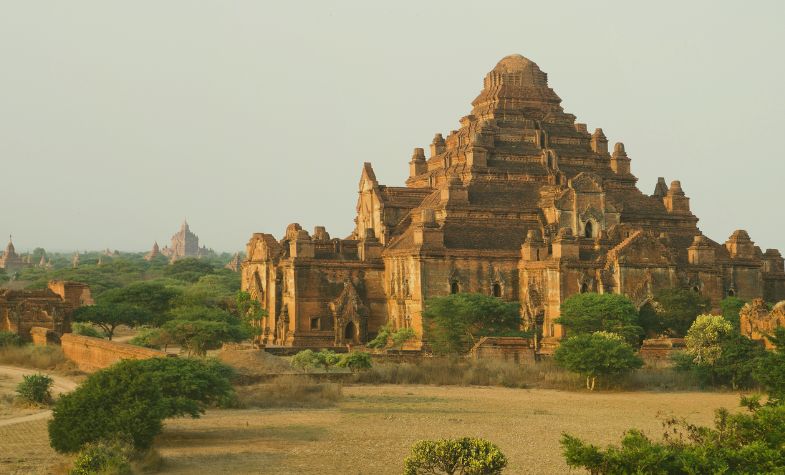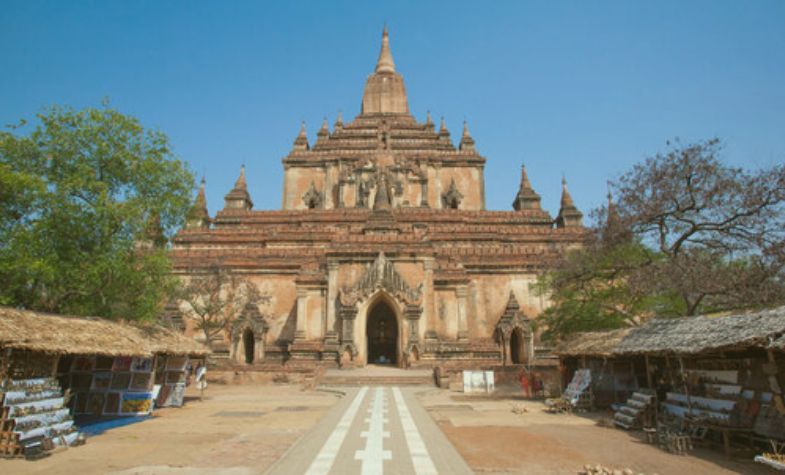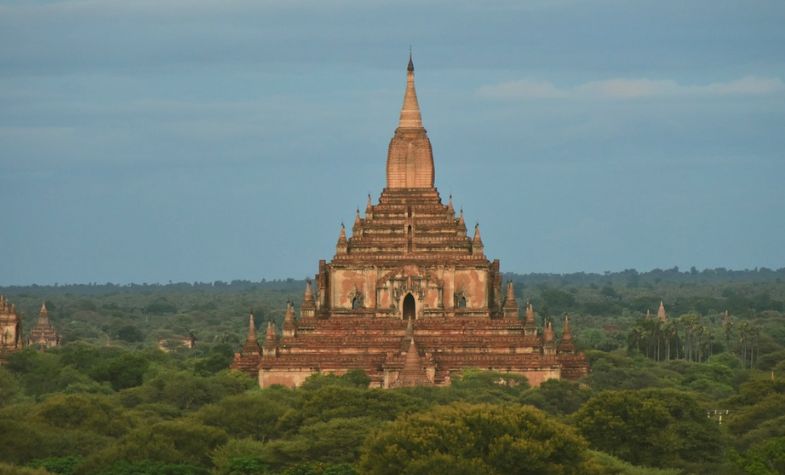

The Sulamani Temple in Bagan is one of the most elegant and significant religious structures in Myanmar, offering a rich historical and cultural experience for visitors. Built during the reign of King Narapatisithu in the late 12th century, the temple stands as a testament to the architectural and artistic achievements of the Bagan period. The temple is often admired for its grandeur, symmetry, and fine craftsmanship, making it one of the most notable landmarks in Bagan, a region renowned for its thousands of ancient temples and pagodas.

As one of the largest two-storey temples in Bagan, the Sulamani Temple design reflects the pinnacle of architectural sophistication from the late Bagan period. The structure follows a square layout with a large ground floor and a smaller upper level, both adorned with several receding terraces. These terraces are a key feature of the temple's design, contributing to its graceful and ascending appearance. The roof of the Sulamani Temple is crowned by a shikhara, a North Indian-style tower that rises above the structure, adding to its grandeur. At the very top of the tower sits the hti, a spire ornament shaped like an umbrella, which is characteristic of many Buddhist temples across Southeast Asia. The temple's symmetrical design includes entrance porches on all four sides, with the eastern porch being the most prominent, serving as the main entry point.

Visitors to the Sulamani Temple are immediately struck by the stunning details and artwork that embellish the building. One of the most impressive features of the temple is the collection of glazed terracotta plaques that adorn the base and terraces of the structure. These plaques, numbering in the hundreds, depict scenes from the Jataka tales, the stories of the Buddha's previous lives, which were intended to educate the public about Buddhist teachings. These intricate depictions serve as both religious lessons and artistic expressions, highlighting the skill and devotion of the craftsmen who created them. In addition to the Jataka plaques, visitors can admire the finely carved stucco decorations that grace the pediments above the entrance doors and windows, further enhancing the temple's beauty.
Inside the temple, the ground floor is home to large Buddha images placed along each of the four walls. These statues represent the Buddha in various postures, each symbolizing different aspects of his teachings. Surrounding the central cube of the lower floor, the walls are adorned with frescoes and murals that depict scenes from the Buddha's life, as well as mythological creatures like Naga snakes and Makara sea monsters, which are commonly associated with Buddhist symbolism. The murals, which date back to various periods in Bagan’s history, offer a glimpse into the evolution of artistic styles over time.

In addition to its architectural and artistic significance, the Sulamani Temple was once part of a larger temple complex, which included other buildings such as an ordination hall, a library for Buddhist scriptures, and living quarters for monks. Though many of these structures have been lost to time, the remains of the Sulamani Kyaung, a monastery building, can still be seen within the temple's walled grounds. The temple complex itself is encircled by a protective wall, with a grand arched gateway serving as the entrance. The gateway, topped with small circular stupas, adds to the temple’s spiritual atmosphere and marks the entrance to a sacred space that has been a place of worship and meditation for centuries.
For visitors to Bagan, the Sulamani Temple is an essential stop on any tour of the region. Not only does it offer a chance to explore a magnificent architectural structure, but it also provides an opportunity to reflect on the rich history and spiritual heritage of Bagan. Whether you're a history enthusiast, a lover of art and architecture, or someone seeking a peaceful place for contemplation, the Sulamani Temple offers something for everyone. In conclusion, the Sulamani Temple is a remarkable destination that encapsulates the artistic, architectural, and spiritual grandeur of Bagan, making it a must-visit for anyone exploring the wonders of Myanmar.
***
If you're looking for an authentic cultural experience, do not hesitate to contact Travel Authentic Asia to choose a Myanmar tour, Vietnam Myanmar and Thailand tour or to customize your own style tour to South East Asia.